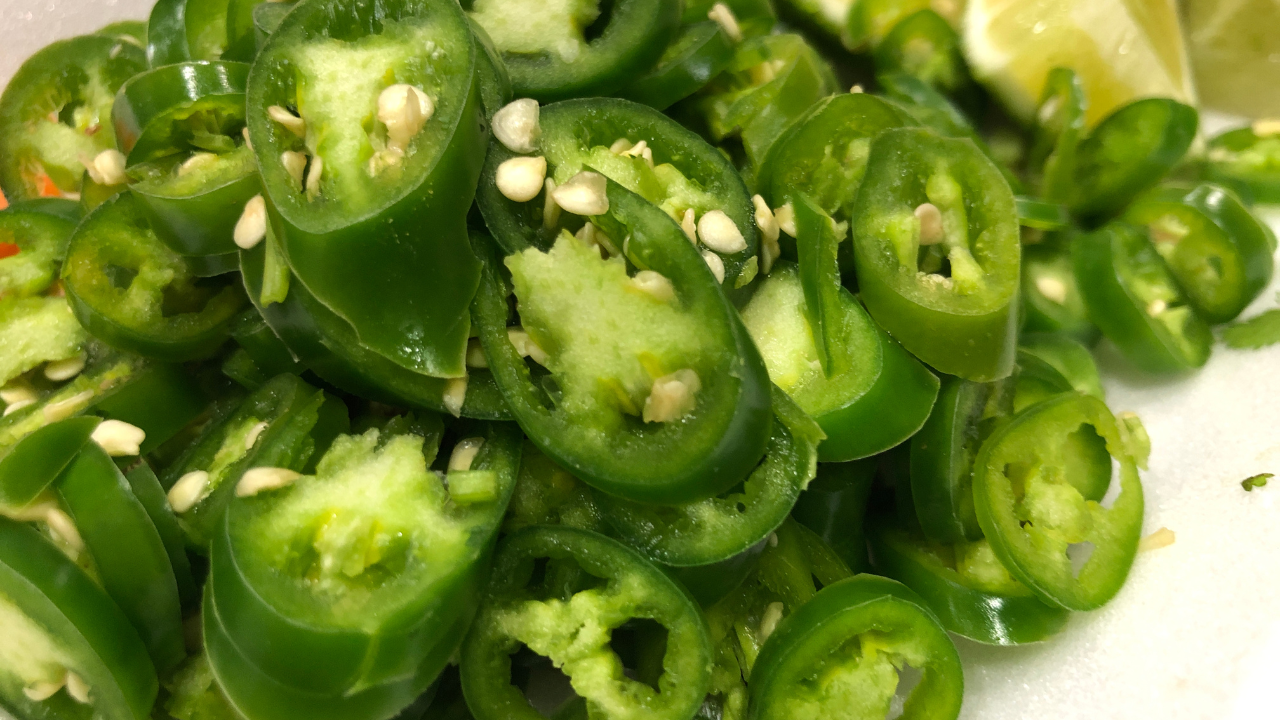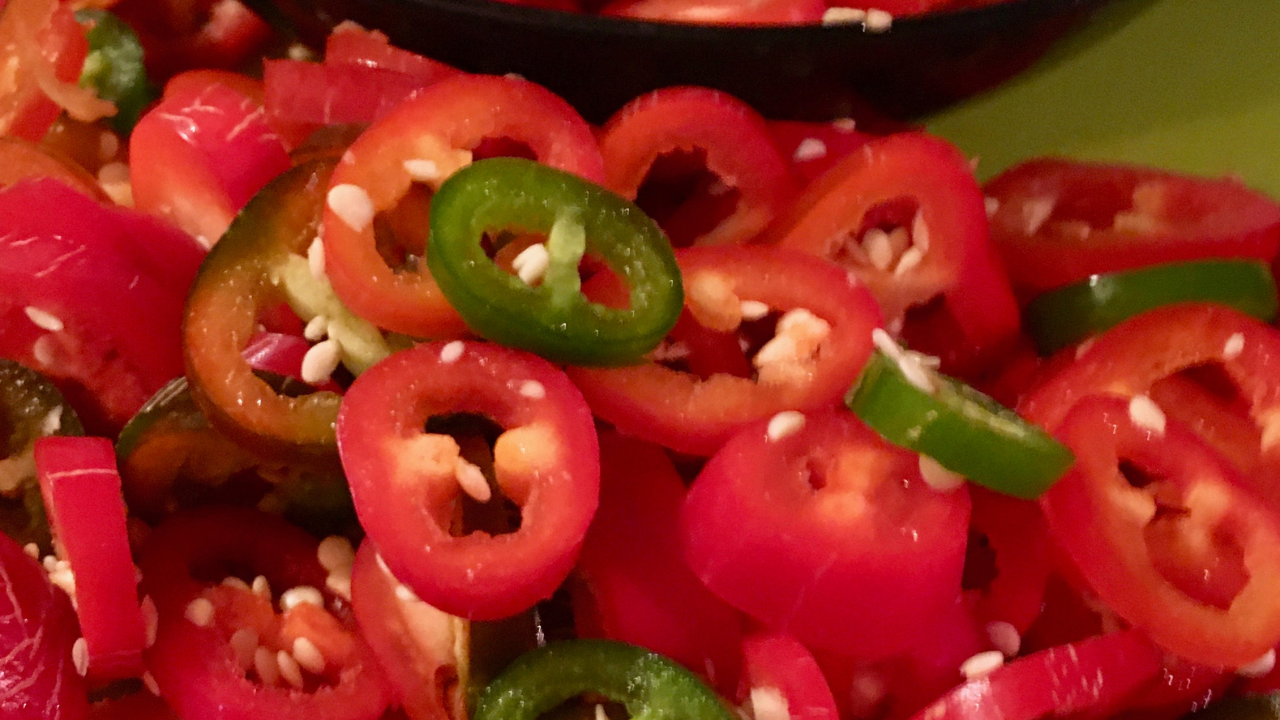Embark on a delicious journey into the world of jalapeno seeds, tiny yet complex ingredients that add spice and character to a variety of culinary ingredients. From the unique 21-seed cucumber jalapeno tequila recipe to the intriguing blue beans and food-worthy sunflower seeds in jalapenos, this article explores the nuances of these seeds. Dive into the metabolism, spice levels and nutritional value of jalapeno seeds, practical tips for growing and cultivating jalapeno plants and explore the history and cultural significance of this fruit, with personal experience and inspiration for readers to spice up their own culinary adventures.
Table of Contents
ToggleJalapeño Seeds

These seeds are small, white, round seeds found in jalapeno peppers. Jalapeno peppers are a type of chili pepper that belongs to the Capsicum annuum family, which includes bell pepper, cayenne pepper and paprika. Jalapeno peppers are named after the original Mexican town of Xalapa (or Jalapa).
They contain capsaicin, a compound that gives them a spicy, pungent taste. Capsaicin is also responsible for many of the health benefits of jalapeno fruit, such as pain relief, anti-inflammatory and anti-inflammatory Jalapeno fruit can range from mild to very hot depending on variety, maturity and on the growth of the potato.
History and Origins of Jalapeño Seeds
Jalapeno fruit has a long and fascinating history dating back to the civilizations of ancient Mesoamerica. The Aztecs, Mayans, and other indigenous peoples used jalapeno seeds as food, medicine, and money. They also valued the spiritual and religious significance of jalapeno fruit, as the heat and fire of the fruit were believed to represent the power and strength of the gods.
Jalapenos were introduced to the world by Spanish explorers and colonists, who brought them back to Europe, Asia and Africa in the 16th century Since then, jalapenos have spread and adapted across food cultures, becoming a staple of makes many dishes and sauces around the world.
Culinary Delights with Jalapeño Seeds
Versatile and delicious, jalapeno seeds can be used in a variety of ways to add flavor and texture to your dish. Here are some examples of how you can use jalapeno seeds in recipes. Seed Pot Jalapeno Tequila Recipe
If you are looking for a refreshing and spicy drink, try this seed cucumber jalapeno tequila recipe. Easy to make and perfect for a summer day or party night. Here’s what you need:
- 1/4 cup jalapeno seeds
- 1/4 cup sugar
- 1/4 cup water
- 1/4 cup lime juice
- 2 cups cut cookies
- 1 1/2 cups tequila
- With crushed ice
- Salt and powder furnace cleaning
To make seed cucumber jalapeno tequila, follow these steps:
- In a small saucepan, combine jalapeno seeds, sugar and water. Bring to a boil, then reduce the heat and simmer for about 10 minutes, stirring occasionally, until the sugar has dissolved and the seeds have released their flavor Strain the syrup and cool completely.
- In a blender, combine lime juice, cucumber and tequila. Blend until smooth and frothy.
- Fill a cocktail shaker with ice and add some of the cucumber tequila mixture. Shake well and strain into a salted glass. Repeat with the remaining mixture.
- Drizzle a little of the jalapeno seed syrup over each glass and garnish with a lime wedge.
Brown Seeds in Jalapeños

You may have noticed that some jalapeno peppers have brown seeds, while others have white seeds. What does that mean, does it affect the flavor and temperature of the potatoes?
Flavor and Heat Variations
The color of the jalapeno fruit is determined by the age and ripeness of the pepper. As jalapeno peppers mature, they change from green to red, and their seeds change from white to brown. Brown seeds indicate that the potatoes are fully cooked and have reached peak temperature and flavor. White seeds, on the other hand, mean the potatoes are still green and maintain a mild, grassy flavor.
However, the temperature and flavor of the potatoes is not limited to the color of the seeds. Other factors, such as soil, climate, and genetics, also play a role in determining spiciness and flavor. Thus, seed color alone cannot be used to judge temperature and pepper flavor. The best way to find out is to try it yourself, but be careful not to burn your tongue!
Jalapeño Sunflower Seeds
Jalapeno sunflower seeds are a delicious and healthy dessert that combines the crunch of sunflower seeds with the spiciness of jalapeno seeds. Sunflower seeds are packed with protein, fiber, healthy fats, and minerals like magnesium, selenium and zinc. Jalapeno seeds add heat and flavor, as does capsaicin, which has anti-inflammatory, anti-inflammatory and aphrodisiac properties.
You can buy jalapenos and sunflower seeds from many stores and online stores, or you can make your own at home. Here is a simple recipe for jalapeno sunflower seeds:
- 2 cups raw sunflower seeds
- 2 tablespoons olive oil
- 2 tablespoons salt
- 2 tablespoons garlic powder
- 2 tablespoons onion powder
- 2 tablespoons paprika
- 1 teaspoon cumin
- 1/4 teaspoon cayenne pepper
- 1/4 cup jalapeno seeds
To make the Jalapeno Sunflower Seeds, follow these steps:
- Preheat the oven to 180°C (350°F) and line with baking paper.
- Roast sunflower seeds with olive oil and salt; Bake for 15 mins until golden brown.
- from garlic powder, onion powder, paprika, cumin and cayenne pepper.
- Sprinkle spice mixture on seeds; Bake for another 5 minutes.
- Put the seeds in a bowl, add the jalapeno seeds, toss and enjoy!
Jalapeño Pepper Seeds
Growing jalapeno plants:
Start sowing at home 8-10 weeks before the last frost.
Germination takes about 10-14 days in a warm, sunny location.
Plant seedlings out when 6-8 inches tall and frost free.
Outside View:
Place a space plant 18-24 inches apart in a sunny, well-drained location.
Water thoroughly, fertilize every two weeks, stake as needed.
Cutting pumpkins:
Expect first harvest 60-80 days after transplanting.
Continue harvesting until the first frost to ensure sufficient supply.
Can You Eat Jalapeño Seeds?
Yes, you can eat them , but they are hard, rancid and bitter, leading to possible burning sensation due to the capsaicin. While non-toxic, some may experience side effects, nausea, or digestive issues. To enjoy the seedless flavor of the jalapeno, simply slice the pepper in half and remove it, doing so carefully so as not to get on the skin.
Nutritional Value
They are low in nutrients. Usually fiber water and capsaicin. It does not contain many vitamins, minerals or antioxidants. So, eating jalapeno seeds will not give you any health benefits. In fact, eating too many jalapeno seeds can negatively affect your digestion and metabolism.
If you want to get more nutrition from jalapeño peppers, you should eat the flesh rather than the seeds. Jalapeno flesh is rich in vitamin C, vitamin A, folate, potassium and phytochemicals. These nutrients can boost your immune system, protect your cells from damage, and help regulate your blood pressure. Jalapeno flesh has anti-inflammatory, anti-inflammatory and anti-inflammatory properties.
Jalapeño Plant Seeds

To grow your own jalapeño plants, use fresh, uncleaned seeds. Get them from a reputable seed company or gather them from healthy ripe jalapeno peppers. Pick bright red peppers, peel them, and wash the seeds thoroughly. Dry them for a few days. To prepare for planting, soak in water for 24 hours with hydrogen peroxide or other additives such as chamomile tea. Drain and place on a damp paper towel in a warm dark place in until it germinates. Plant the germinated seeds in pots with potting soil and provide regular water, sunlight and heat. Fertilize every two weeks. Once four true leaves have grown, transfer the seedlings to large pots or on the floor, spaced 18 inches apart. Spread as needed and cut green or red jalapeno peppers depending on your preference.
My Personal Experience with Jalapeño Seeds
As an avid fan of jalapeno peppers, I add them to a variety of savory recipes, including salsa, guacamole, nachos, and tacos. While I usually buy fresh jalapenos, I’ve also been trying to grow my own plants from seed, and have been excited to watch them grow and produce potatoes I’ve been experimenting with getting the seeds from the supplier and collecting them mouth from the ripe potatoes. If I choose the latter option, I appreciate the cost-effectiveness and convenience, which allows me to examine jalapeno varieties—seeing variations in seed color, size, and shape from soft to with high temperatures, I like the effect it can have on germination and potato quality.
In my jalapeño seed efforts I have tried different preparations and cultivation methods. While soaking the seeds in water for 24 hours and drying them on a damp paper towel proved effective for me, I also investigated supplements like hydrogen peroxide, chamomile tea, and cinnamon — and I found that it had little effect on seedling germination or health. Even so, the process of growing jalapeno plants from seed is still very rewarding, leaving you with a sense of accomplishment. Sharing a sweet harvest satisfies friends and family, making jalapeno seeds a good gateway to gardening and a spicy life.
Conclusion
Jalapeno pepper seeds are edible, but not very sweet or nutritious. They are thick, tender, bitter and hot. It can cause irritability, nausea, or digestive problems in some people. To eat jalapeño peppers, you can remove the seeds before cooking or eating. If you want to grow jalapeno plants, you can use the seeds as a seed source. You should choose new viable seeds and prepare them thoroughly before planting. If you want to grow jalapeno plants from seed, you can enjoy the process of harvesting the jalapeno pepper, using it in your own recipes. Jalapeno pepper seeds are versatile and fun to explore.
FAQs
1. Can I grow jalapeno plants from seed?
Yes, jalapeno plants can be grown from seed purchased from a seed company or from mature pumpkins.
2. How do I make jalapeno seeds for planting?
Soak the seeds for 24 hours until germination on damp paper towels, keeping them warm and dark.
3. What is the best way to get fresh jalapeno seeds?
You can buy them from a reputable seed company or harvest them from healthy, mature jalapeño peppers that are bright yellow in color.
4. Are there different varieties of jalapeño fruit?
Yes, jalapeno varieties have different seed colors, shapes and sizes, which can affect germination and potato quality.
5. How do you like seedless jalapeno peppers?
Cut the potatoes in half and remove the seeds and whites, or remove them with a spoon to make sure they don’t get on the skin.

Meet Misha Mehboob, a passionate food enthusiast and computer science student from Sargodha University. Misha’s culinary journey is fueled by her love for exploring new flavors and experimenting in the kitchen.
At CrispyEatHub, Misha shares her creative recipes and practical cooking tips to inspire fellow food lovers on their culinary adventures. From quick weeknight dinners to indulgent desserts, there’s something delicious for every palate.
Join Misha as she combines her love for food and technology to create mouthwatering dishes that delight the senses and bring people together. Let CrispyEatHub be your go-to resource for culinary inspiration and delicious recipes that make every meal memorable.
